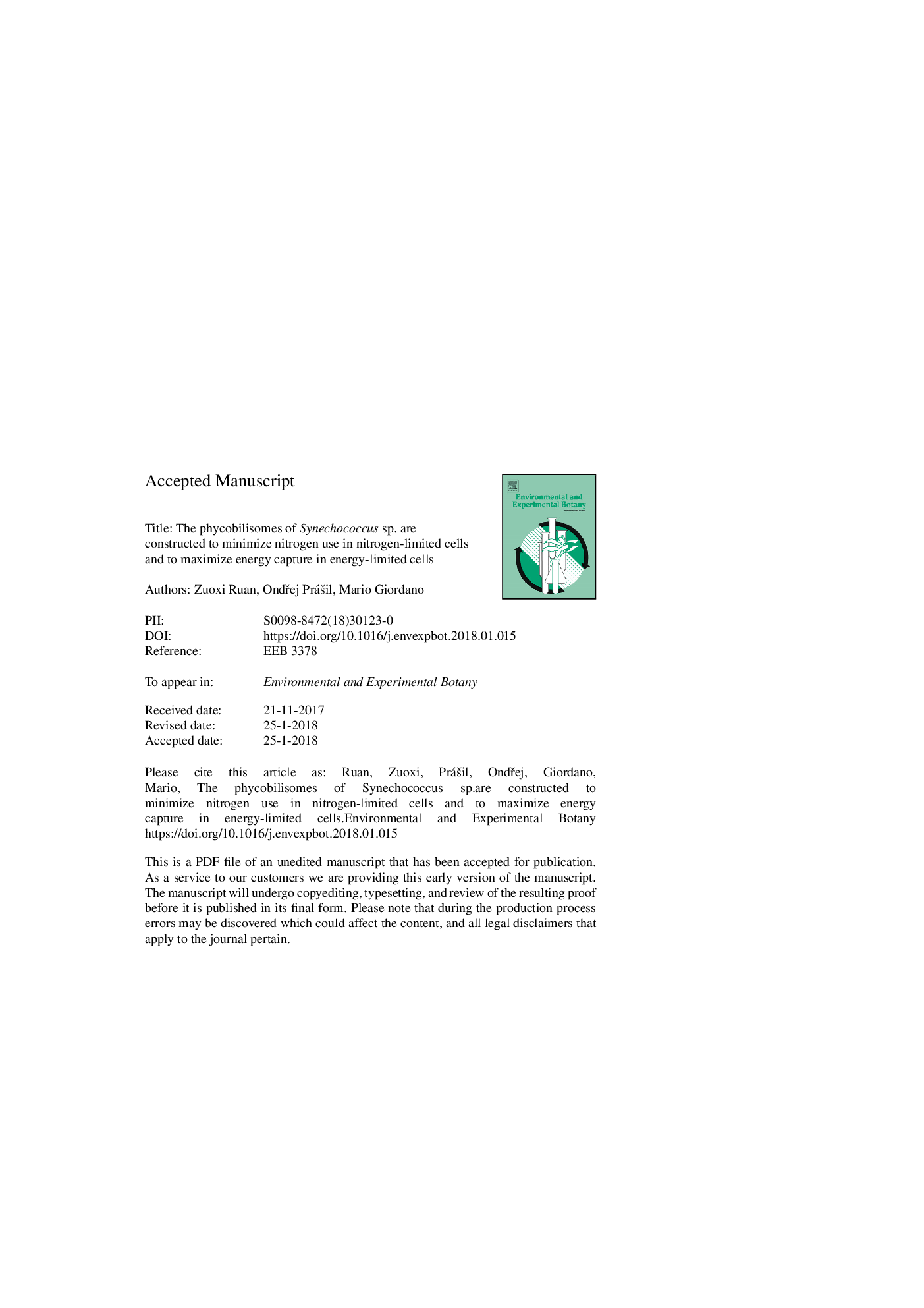| Article ID | Journal | Published Year | Pages | File Type |
|---|---|---|---|---|
| 8887001 | Environmental and Experimental Botany | 2018 | 44 Pages |
Abstract
Synechococcus sp. UTEX LB2380 is a coastal strain of a cosmopolitan cyanobacterial genus. In coastal waters, N and light availability are highly variable and their interplay may influence C allocation and photosynthetic performance. In this paper, we compared the impact of nitrogen (N) limitation and energy (light, E) limitation on phycobilisome composition and photosynthesis, in the presence of either NO3â or NH4+. Our hypothesis was that the phycobilisome composition would be influenced by the factor limiting growth. Our results show that N-limited cells adjusted their phycobilisome antenna to minimize N utilization, whereas E-limited cells had a phycobilisome composition tailored to alleviate E deficiency. The N-source was relevant for the pigment composition, under both limitations. When N limited growth, excess energy management may become important to decrease the risk of photoinhibition and oxidative stress; when the sink of electrons constituted by NO3â reduction was not present, the cells tended to decrease their phycobiliprotein content, possibly in order to minimize the size of PSII antennas and decrease excitation. When energy was limiting, the energy saved for N assimilation in NH4+-grown cells was invested in antenna pigments to allow for a higher energy input.
Related Topics
Life Sciences
Agricultural and Biological Sciences
Ecology, Evolution, Behavior and Systematics
Authors
Zuoxi Ruan, OndÅej PráÅ¡il, Mario Giordano,
